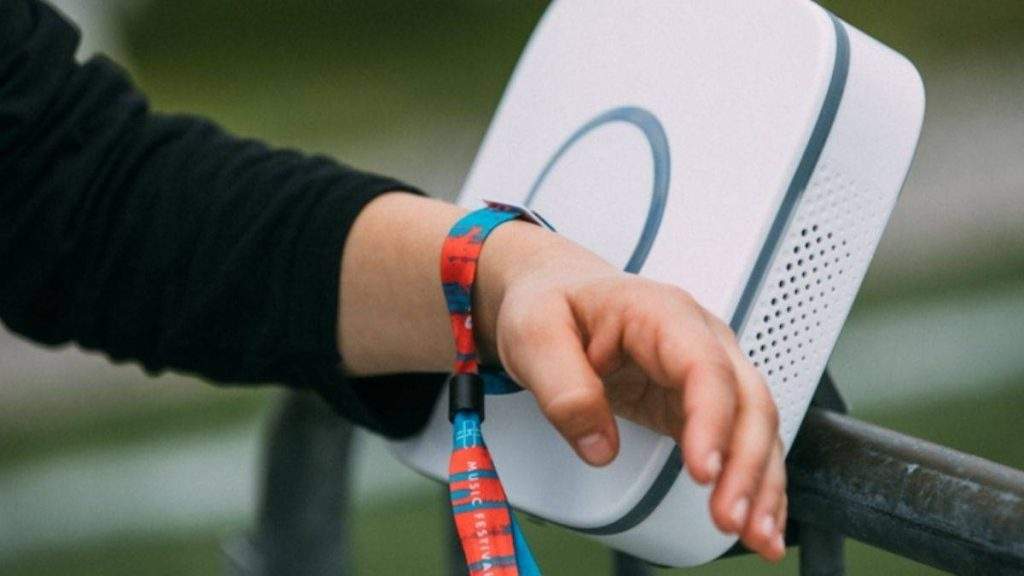Over the past few years, NFC and RFID have become the standard wireless technologies used at leading events such as music festivals, exhibitions, and sports tournaments. Providing everything from speeding up queues, increased security, cashless vending, and much more, they have become an essential element of events management. In this article, we’ll look at why they are so useful.

1. Shortening queues
Customers quickly get frustrated when they are left queueing up for long periods. Does Velcro Come Off Easily? It’s a frustration that can have a negative effect on their enjoyment and, at some types of events, can boil over into anger. From a business perspective, customers kept outside also have less time to spend money in the venue, so that’s another incentive to get them through the doors as quickly as possible.
Providing customers with NFC or RFID wristbands when they book their tickets, can make entry much quicker. Rather than having to visually check tickets, the RFID or NFC tag inside the wristband can be scanned simply by the customer placing it near to a reader. As readers can be built into entrances, this means you don’t even need staff to do the scanning for you, though handheld readers are available if you want to use security staff at the entrance.
NFC and RFID wristbands can also be used to control access to different areas, so that customers can only go to allocated seating and those with backstage or VIP authorization can be given access to the areas they need to go to.
2. Cashless vending
One of the great advantages of RFID and NFC technology is that it can be used for cashless payments. Users can pay simply by tapping an NFC wristband or smart card, such as those available from on a payment reader.
Cashless payments help speed up queues in event canteens as service personnel doesn’t need to waste time taking cash and counting out change. This means happier customers and, as there’s no cash, there’s no tallying up or theft to worry about. Customers won’t need to waste their time in ATM queues, either. In addition, data collected from the cashless readers can give you an insight into what products are selling better than others and how much people are spending.
3. Improve opportunities for sponsors
Many events rely on sponsorship to maintain financial viability. Today, NFC and RFID are providing new and exciting ways for sponsors to benefit from their investment. For example, customers can use a wristband or smart card to engage in a whole range of sponsorship activities, such as promotions, raffles, competitions, and polls. In the past, having to fill in a form or give personal details to a member of staff before engaging in an activity acted as a barrier. Using NFC or RFID means they can just tap and go, which encourages more people to get involved and makes it easier for the sponsors to stay in touch.
In addition, NFC and RFID enable customers to check-in at sponsor locations across the venue. This lets sponsors understand exactly how much traffic they are getting at each event. As a result, it is easier for them to gauge the value of their sponsorship and work out their ROI.
4. Put an end to counterfeiting
Events have been Today, they are sold to innocent victims from bogus online websites and by unscrupulous touts parading outside the entrance. They are bad news for the customer and for the event.
You can get around this by replacing paper tickets with NFC and RFID wristbands, cards, and even wearables. As every tag is unique, it can’t easily be counterfeited. Even if they are lost or stolen, it’s a simple process to deactivate them and issue the customer with a replacement.
5. Real-time data
As the information stored on NFC and RFID chips are linked to a central computer system, event organizers are able to get a detailed, real-time insight into their event. They can discover where the most popular and unpopular locations are, whether areas are getting too busy and where foot-traffic is located at any particular time. As the information is provided in real-time, this gives event managers the opportunity to take on the spot decisions to make improvements that can have a positive impact. For example, if one area is getting overcrowded, measures can be put in place to stop it from becoming a hazard.
Wrapping up
RFID and NFC can be exceptionally useful technology for events management. They speed up processes, shorten queues, improve opportunities for engagement, remove the need for cash purchases and strengthen security. With further developments in the pipeline, these technologies look certain to play an ever more important role for event-holders.
Read More: Top 7 Most Delightful Ice Cream Flavors to Try In 2021